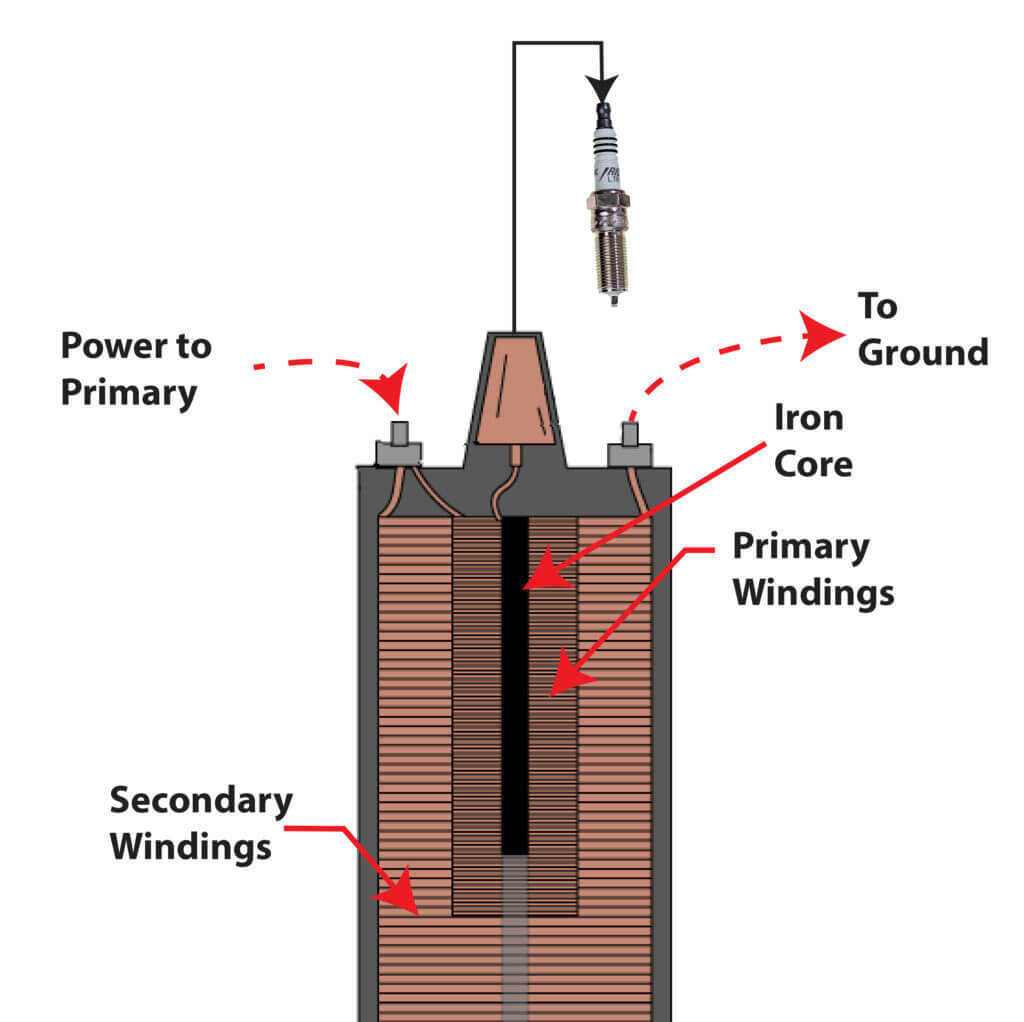How an Ignition Coil works
How an Ignition Coil works
An ignition coil provides a high voltage pulse that fires across a spark gap to ignite the air/fuel mixture in the combustion chamber. The ignition coil has three components; primary winding, a secondary winding, and an iron core. These components work together to convert 12-volt DC power in 25,000 to 40,000 volts DC.
Primary windings and the iron core
The primary winding consists of approximately 200 wraps of  a thick gauge wire wound around an iron core. When 12 volts are applied to the primary windings, the primary winding creates a magnetic field, basically turning the unit into a powerful electro-magnet.
a thick gauge wire wound around an iron core. When 12 volts are applied to the primary windings, the primary winding creates a magnetic field, basically turning the unit into a powerful electro-magnet.
Secondary windings
The secondary windings consist of approximately 20,000 wraps of small gauge wire wound around the primary windings and iron core.
How the ignition coil works
The primary windings and iron core create a strong electro-magnet. When power or ground is disconnected from the primary windings from either the ignition module or the ECM, the strong magnetic field collapses. During the collapse, the collapsing magnetic energy induces a surge of current in the secondary windings. So an ignition coil takes electricity and converts it into a magnetic field and then back to electricity. However, since the secondary coil contains so many more windings, the magnetic field collapse transforms 12 volts into 25,000 to 45,000 volts. The amount of the increase in voltage is directly proportional to the ratio of primary to secondary windings, which is typically around 80.
See this post for information on bad ignition coil symptoms
See this post for information on how to test an ignition coil
How often does the ignition coil generate a spark?
The spark count per coil varies based on the type of ignition system. In a single coil (canister) ignition system, the formula to determine spark counts is:
Spark count = RPM x Number of cylinders÷2
For example: At 3,000 RPM on a 4-cylinder engine (3,000 x 4 ÷ 2) = 6,000 sparks per minute.
©, 2020 Rick Muscoplat
Posted on by Rick Muscoplat